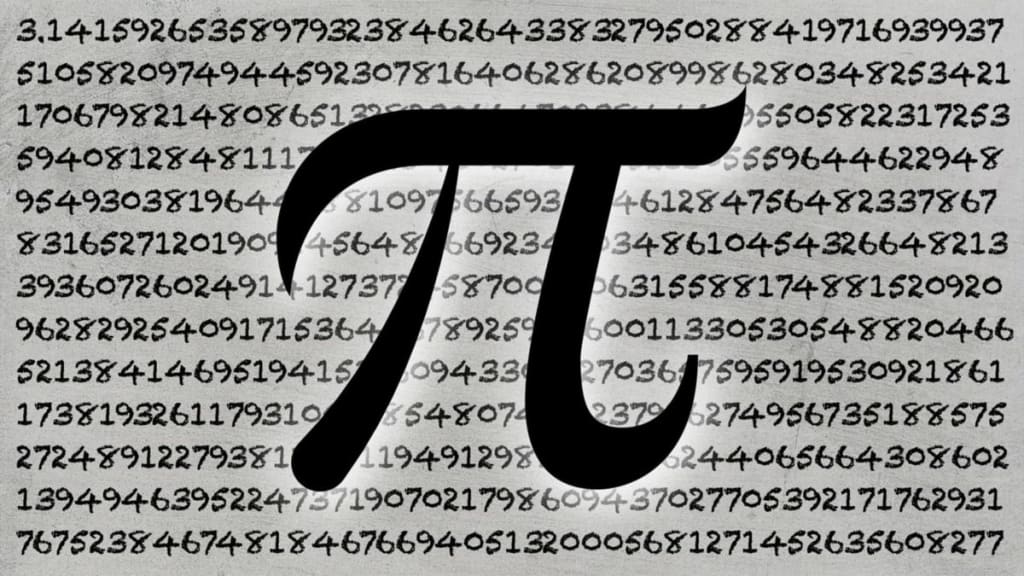
H I S T O R Y O F T H E P I N U M B E R S
The history of pi, denoted by the Greek letter π, is a long and fascinating one that spans thousands of years. Pi is the mathematical constant that represents the ratio of the circumference of a circle to its diameter. The value of pi is approximately 3.14159265359, and it is an irrational number, meaning it cannot be expressed as a finite decimal or a fraction.
The origins of pi can be traced back to ancient civilizations such as the Egyptians and Babylonians, who used a rough approximation of pi to solve problems related to the measurement of circles. The Egyptians, for example, used a value of 3.16 for pi, while the Babylonians used a value of 3.125.
However, it was the ancient Greek mathematician Archimedes who is credited with making significant contributions to the calculation of pi. In the third century BCE, Archimedes used a method of exhaustion to approximate the value of pi with remarkable accuracy. He inscribed and circumscribed circles of increasing numbers of sides inside and outside a regular hexagon, then calculated the perimeter of each polygon. By continuing this process with increasingly larger polygons, he was able to calculate the value of pi with an error of less than 1%.
In the fifth century CE, the Indian mathematician Aryabhata used a similar method to approximate the value of pi, although he used a slightly different formula to calculate the perimeter of the polygons. His method was based on the approximation of the circumference of a circle as the sum of the perimeters of regular polygons inscribed and circumscribed around the circle.
During the Middle Ages, pi continued to be studied and approximated by mathematicians in both the Islamic and European worlds. In the Islamic world, mathematicians such as al-Khwarizmi and al-Farabi made significant contributions to the study of pi. Al-Khwarizmi, for example, calculated pi to be 3.1416, while al-Farabi used a value of 3.1418.
In Europe, mathematicians such as Fibonacci, John Wallis, and Isaac Barrow also made significant contributions to the study of pi. In the thirteenth century, Fibonacci used a recursive formula to approximate pi, while Wallis used an infinite product to approximate pi in the seventeenth century. Barrow, who was a mentor to Isaac Newton, used the method of exhaustion to calculate the value of pi with an error of less than 0.01%.
It was not until the seventeenth century that pi began to be symbolized by the Greek letter π, which was first used by the Welsh mathematician William Jones. In 1706, the German mathematician Johann Lambert proved that pi was irrational, meaning it cannot be expressed as a fraction.
In the nineteenth century, the Swiss mathematician Johann Heinrich Lambert and the German mathematician Ferdinand von Lindemann proved that pi was also transcendental, meaning it is not the solution to any algebraic equation with rational coefficients. This discovery was a significant milestone in the history of pi, as it provided a mathematical proof for the irrationality of pi that had been suspected for centuries.
Today, pi continues to be a subject of study and fascination for mathematicians and enthusiasts alike. In recent years, computers have been used to calculate pi to billions of digits, although it is unlikely that all of these digits will ever be needed for any practical application.
In conclusion, the history of pi is a long and fascinating one that spans thousands of years and involves the contributions of mathematicians from all over the world. From the rough approximations of ancient civilizations to the precise calculations of modern computers, the study of pi has played a significant role in the development of mathematics and science
About the Creator
Ihsan Alp
I am a freelancer with very high knowledge of writing, translation and software programs.






Comments
There are no comments for this story
Be the first to respond and start the conversation.